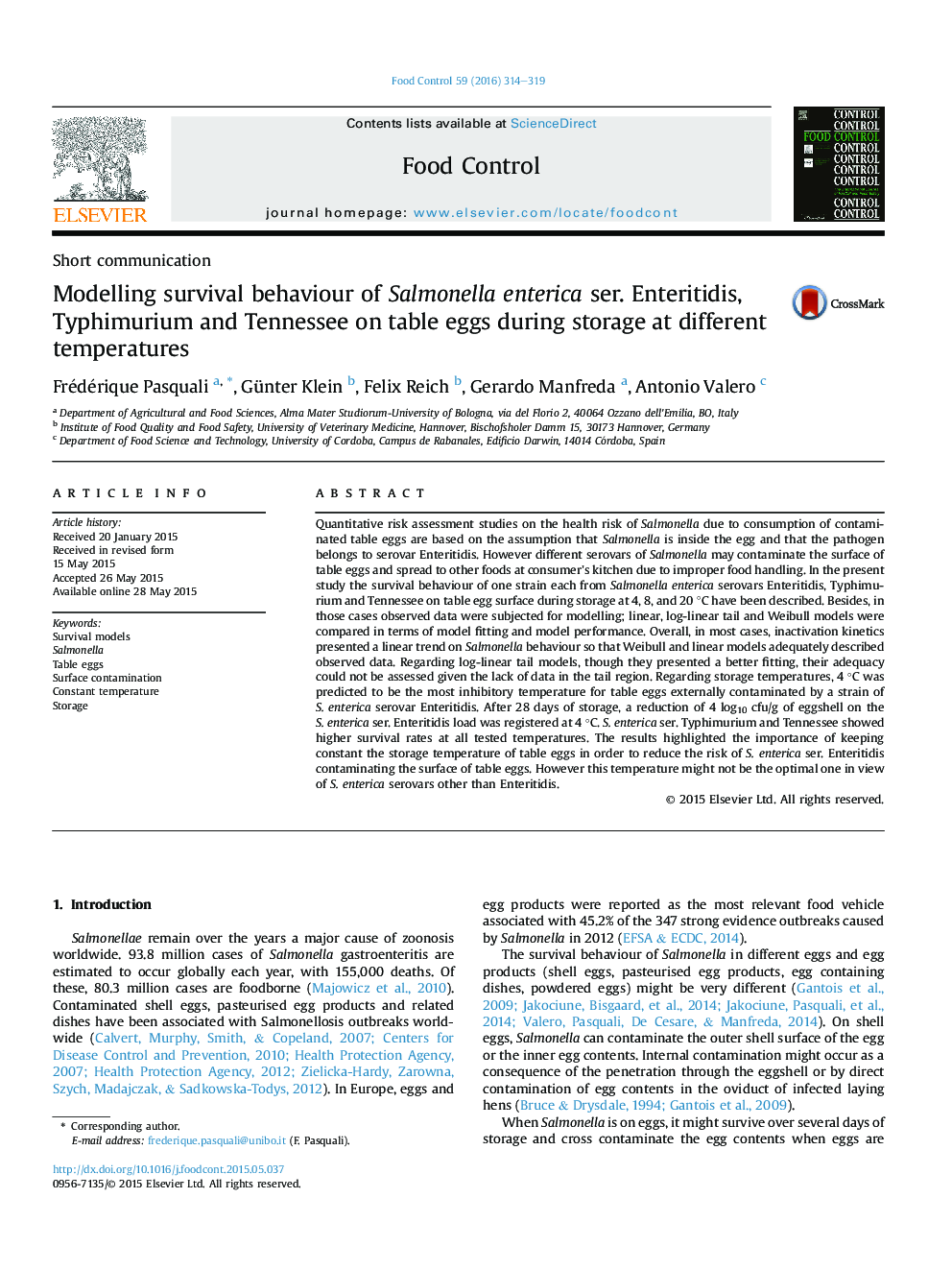| کد مقاله | کد نشریه | سال انتشار | مقاله انگلیسی | نسخه تمام متن |
|---|---|---|---|---|
| 6390569 | 1628403 | 2016 | 6 صفحه PDF | دانلود رایگان |

- Different Salmonella enterica serovars may contaminate the surface of table eggs.
- Survival behaviours of S. enterica serovars during storage have been modelled.
- Log linear tail and Weibull models adequately explained Salmonella behaviours.
- A constant temperature of storage of 4 °C reduces the risk of serovar Enteritidis.
- The same may not be true for serovars Typhimurium and Tennessee.
Quantitative risk assessment studies on the health risk of Salmonella due to consumption of contaminated table eggs are based on the assumption that Salmonella is inside the egg and that the pathogen belongs to serovar Enteritidis. However different serovars of Salmonella may contaminate the surface of table eggs and spread to other foods at consumer's kitchen due to improper food handling. In the present study the survival behaviour of one strain each from Salmonella enterica serovars Enteritidis, Typhimurium and Tennessee on table egg surface during storage at 4, 8, and 20 °C have been described. Besides, in those cases observed data were subjected for modelling; linear, log-linear tail and Weibull models were compared in terms of model fitting and model performance. Overall, in most cases, inactivation kinetics presented a linear trend on Salmonella behaviour so that Weibull and linear models adequately described observed data. Regarding log-linear tail models, though they presented a better fitting, their adequacy could not be assessed given the lack of data in the tail region. Regarding storage temperatures, 4 °C was predicted to be the most inhibitory temperature for table eggs externally contaminated by a strain of S. enterica serovar Enteritidis. After 28 days of storage, a reduction of 4 log10 cfu/g of eggshell on the S. enterica ser. Enteritidis load was registered at 4 °C. S. enterica ser. Typhimurium and Tennessee showed higher survival rates at all tested temperatures. The results highlighted the importance of keeping constant the storage temperature of table eggs in order to reduce the risk of S. enterica ser. Enteritidis contaminating the surface of table eggs. However this temperature might not be the optimal one in view of S. enterica serovars other than Enteritidis.
Journal: Food Control - Volume 59, January 2016, Pages 314-319